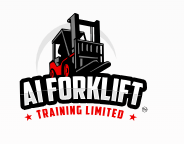In industrial and construction settings, safety is paramount. Among the many risks workers face, falls from height are one of the most serious. According to the Occupational Safety and Health Administration (OSHA), falls are a leading cause of injury and death in workplaces. This is especially true for forklift operators, who often work at elevated heights to move and stack materials. To mitigate these risks, fall protection training and certification for forklift operators are crucial steps in ensuring workplace safety and compliance.
Understanding the Risks
Forklift operators perform tasks that frequently require them to work at heights, whether it’s loading pallets onto high shelves in warehouses or maneuvering materials in construction zones. Without proper precautions, these tasks can lead to accidents resulting in severe injuries or fatalities due to falls.
OSHA mandates that employers provide fall protection systems for employees working at heights above six feet in general industry settings. This includes the use of guardrails, safety nets, or personal fall arrest systems (PFAS) such as harnesses and lanyards. Forklift operators must not only be aware of these safety measures but also trained in their proper use to prevent accidents effectively.
Importance of Fall Protection Training
Fall protection training equips forklift operators with the knowledge and skills necessary to work safely at heights. The training typically covers several key areas:
- Identification of Fall Hazards: Recognizing potential hazards specific to forklift operations, such as unstable loads, uneven surfaces, or overhead obstacles.
- Selection and Use of Safety Equipment: Understanding the appropriate use of personal protective equipment (PPE) like harnesses, lanyards, and anchor points to prevent falls.
- Safe Work Practices: Implementing procedures for safe work at heights, including proper positioning of forklifts, securing loads, and maintaining clear communication with ground personnel.
- Emergency Procedures: Knowing how to respond in case of a fall, including rescue techniques and first aid.
By undergoing comprehensive fall protection training, forklift operators not only enhance their own safety but also contribute to a safer work environment for everyone.
Certification Process
Certification validates that forklift operators have completed the necessary training and are competent in fall protection practices. Certification typically involves:
- Training Course Completion: Successful participation in a structured training program that meets OSHA standards for fall protection.
- Skill Assessment: Demonstrating proficiency in using fall protection equipment and implementing safe work practices through practical assessments.
- Written Examination: Testing knowledge of fall hazards, safety procedures, and emergency response protocols.
Certification is often renewed periodically to ensure that operators stay updated with any changes in safety regulations or equipment.
Employer Responsibilities
Employers play a crucial role in ensuring the safety of their forklift operators. Beyond providing training and certification, they must:
- Provide Proper Equipment: Ensuring that all necessary fall protection equipment is readily available and maintained in good condition.
- Enforce Safety Policies: Establishing and enforcing strict safety protocols, including regular inspections and audits to identify and address potential hazards.
- Encourage a Safety Culture: Promoting a workplace culture where safety is prioritized and employees feel empowered to report hazards or unsafe practices.
By fulfilling these responsibilities, employers not only comply with regulatory requirements but also create a safer and more productive work environment.
Benefits of Compliance
Investing in fall protection training and certificate for forklift operator yields numerous benefits for both employers and employees:
- Reduced Incidents: Properly trained forklift operators are less likely to experience falls or accidents, leading to fewer injuries and reduced downtime.
- Improved Morale: Employees feel valued when their safety is prioritized, leading to higher job satisfaction and increased productivity.
- Legal Compliance: Avoiding fines and penalties associated with non-compliance with OSHA regulations.
- Enhanced Reputation: Building a reputation as a safety-conscious employer can attract top talent and improve relationships with clients and stakeholders.
Conclusion
fall protection training and certification are indispensable components of workplace safety, particularly for forklift operators who work at elevated heights. By equipping operators with the knowledge and skills to identify hazards, use appropriate safety equipment, and adhere to safe work practices, employers not only fulfill their legal obligations but also protect their most valuable asset—their employees. Investing in safety today ensures a safer, more secure tomorrow for everyone involved in industrial and construction operations.




